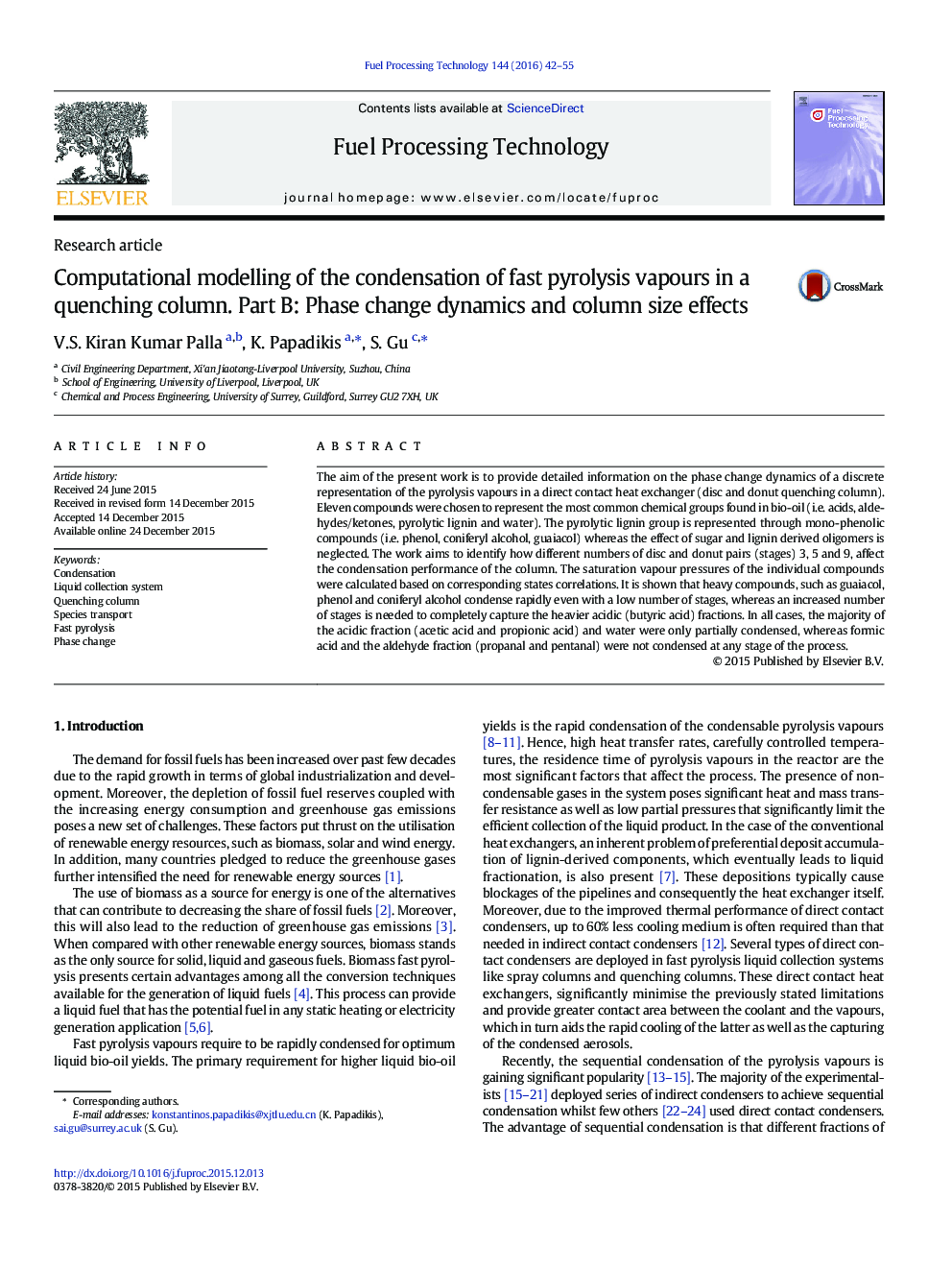| کد مقاله | کد نشریه | سال انتشار | مقاله انگلیسی | نسخه تمام متن |
|---|---|---|---|---|
| 209255 | 461664 | 2016 | 14 صفحه PDF | دانلود رایگان |
• The fractional condensation of pyrolysis vapours in a quenching column is simulated.
• The effect of the number of disc–donut stages in the column is investigated.
• A discrete representation of the pyrolysis vapours is utilised.
• High volatility compounds are partially condensed.
• Column pressure build up aids the conversion of the highly volatile compounds.
The aim of the present work is to provide detailed information on the phase change dynamics of a discrete representation of the pyrolysis vapours in a direct contact heat exchanger (disc and donut quenching column). Eleven compounds were chosen to represent the most common chemical groups found in bio-oil (i.e. acids, aldehydes/ketones, pyrolytic lignin and water). The pyrolytic lignin group is represented through mono-phenolic compounds (i.e. phenol, coniferyl alcohol, guaiacol) whereas the effect of sugar and lignin derived oligomers is neglected. The work aims to identify how different numbers of disc and donut pairs (stages) 3, 5 and 9, affect the condensation performance of the column. The saturation vapour pressures of the individual compounds were calculated based on corresponding states correlations. It is shown that heavy compounds, such as guaiacol, phenol and coniferyl alcohol condense rapidly even with a low number of stages, whereas an increased number of stages is needed to completely capture the heavier acidic (butyric acid) fractions. In all cases, the majority of the acidic fraction (acetic acid and propionic acid) and water were only partially condensed, whereas formic acid and the aldehyde fraction (propanal and pentanal) were not condensed at any stage of the process.
Journal: Fuel Processing Technology - Volume 144, April 2016, Pages 42–55
